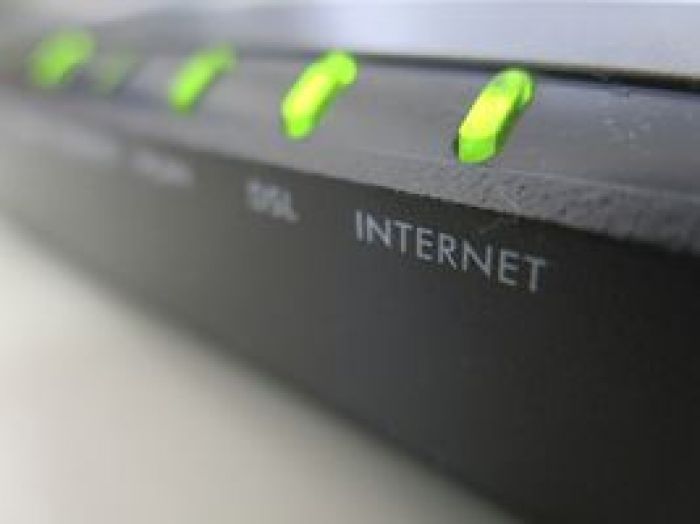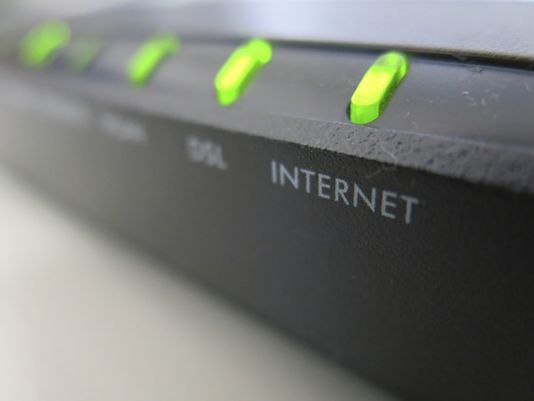How to choose between Comcast and Verizon for Internet service

Rob Pegoraro, Special for USA TODAY 11:08 a.m. EDT June 19, 2016

Rob Pegoraro walks a reader through the process of choosing between Comcast and Verizon fios for high-speed Internet service.(Photo: Getty Images/iStockphoto)
Q. I can use Verizon Fios or Comcast for my home Internet. Which one should I go with if I’m going to stream all the TV I watch?
A. This reader in a Philadelphia suburb is blessed with a choice of high-speed Internet providers. Most Americans don’t have that such flexibility: Only 46% can pick from two or more providers offering downloads of 25 million bits per second (Mbps), according to a Dec. 2014 report from the Department of Commerce[1].
The two obvious factors to consider are speed and price, but what should be a simple comparison often gets complicated by contract terms and expiring promotional discounts.
In Verizon’s case, there’s only one speed available at my reader’s address, a 50 Mbps connection that costs $49.99 a month for the first year, then $59.99 a month for the second. It requires a two-year commitment.
Comcast, meanwhile, offers a range of speeds that go as high as two gigabits per second. A 25 Mbps connection costs $39.99 a month for the first year but jumps to $66.95 a month after that. No such math comes with Comcast’s 75 and 150 Mbps plans, which cost $79.95 and $82.95 a month each and have no equivalent at Verizon.
None of the Philadelphia firm’s Internet offers involve a contract.
For streaming high-definition video, 25 Mbps — the definition of broadband[2] that the Federal Communications Commission adopted in January 2015 — should be sufficiently fast. You’d want at least double that for streaming 4K Ultra High Definition movies or TV shows.
Over two years, Verizon’s pricing for 50 Mbps service averages $54.99, barely more than the $53.47 average of the promotional and standard rates for Comcast’s 25 Mbps offering; after two years, Verizon is almost $7 cheaper every month until either company raises its rates.
But you have to be reasonably sure you won’t move out of a Fios market for those two years, or you risk owing an early-termination fee[3] of up to $165. Some Verizon users have reported[4] that they’ve been able to talk the New York firm out of that, but some luck seems to be required.
If you’re sufficiently adept at bargaining with support reps[5], you may be able to get your provider to prolong promotional rates--which could make Comcast’s 25 Mbps tier a better deal.
Having a choice of broadband connections is key to that, since it lets you make a credible threat to drop one company for the other. So is being pleasantly persistent while you’re on the phone.
Don’t forget equipment costs. Both Comcast and Verizon will charge $10 a month to rent a home gateway; you should not pay that rent when you buy the hardware outright[6].
At Comcast, buy a cable modem from its list of approved models[7]. With Verizon, it’s a little more complicated[8]. You can buy its gateway for $149.99, but Internet-only users can also use any existing WiFi router if they run an Ethernet cable instead of the usual coaxial cable[9] from the Optical Network Terminal[10] to your router’s location after having the “ONT” box’s Ethernet port activated[11].
Extras represent yet another item to consider. With Comcast, you get free access to WiFi hotspots[12] from it and other cable operators across the nation[13]. (If you get its cable modem, it will double as a hotspot[14], offering a separate connection to passerby[15] who don’t get access to your own network.) At Verizon, the MyRewards+ program[16] can yield a $10 gift card every year or so.
Data caps[17] can be an issue too. Neither Comcast nor Verizon have one in my reader’s neighborhood, but if one provider imposes one, that should push you strongly towards the other.
Finally, heed neighbors’ advice. If a neighborhood mailing list or forum overruns with complaints about one company’s awful service or unreliable connections, you’re probably not going to have any better luck with that firm.
Rob Pegoraro[18] is a tech writer based out of Washington, D.C. To submit a tech question, e-mail Rob at This email address is being protected from spambots. You need JavaScript enabled to view it." target="_blank">This email address is being protected from spambots. You need JavaScript enabled to view it.. Follow him on Twitter attwitter.com/robpegoraro.[19][20]
Read or Share this story: http://usat.ly/24Z6TQI
References
- ^ a Dec. 2014 report from the Department of Commerce (esa.doc.gov)
- ^ definition of broadband (rssfeeds.usatoday.com)
- ^ early-termination fee (www.verizon.com)
- ^ Some Verizon users have reported (forums.verizon.com)
- ^ bargaining with support reps (usatoday30.usatoday.com)
- ^ not pay that rent when you buy the hardware outright (rssfeeds.usatoday.com)
- ^ its list of approved models (customer.xfinity.com)
- ^ it’s a little more complicated (rssfeeds.usatoday.com)
- ^ run an Ethernet cable instead of the usual coaxial cable (www.washingtonpost.com)
- ^ Optical Network Terminal (www.verizon.com)
- ^ having the “ONT” box’s Ethernet port activated (www.groundedreason.com)
- ^ free access to WiFi hotspots (wifi.xfinity.com)
- ^ other cable operators across the nation (rssfeeds.usatoday.com)
- ^ double as a hotspot (www.yahoo.com)
- ^ offering a separate connection to passerby (www.xfinity.com)
- ^ MyRewards+ program (www.verizon.com)
- ^ Data caps (rssfeeds.usatoday.com)
- ^ Rob Pegoraro (robpegoraro.com)
- ^ This email address is being protected from spambots. You need JavaScript enabled to view it. (rssfeeds.usatoday.com)
- ^ twitter.com/robpegoraro (twitter.com)









